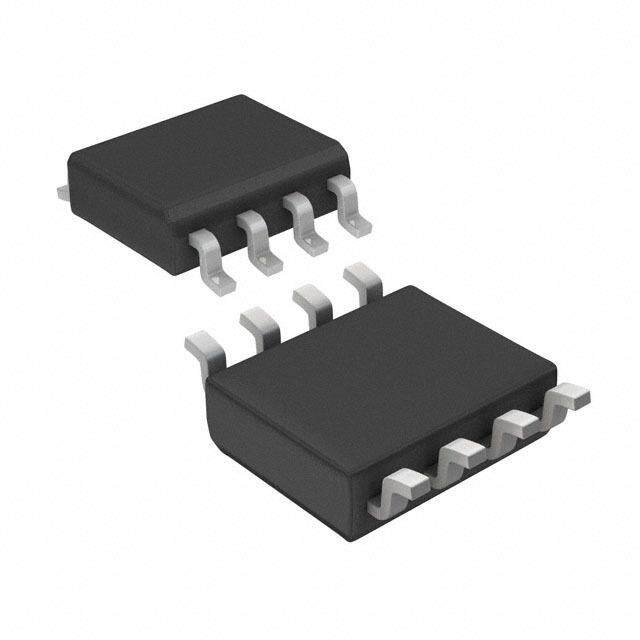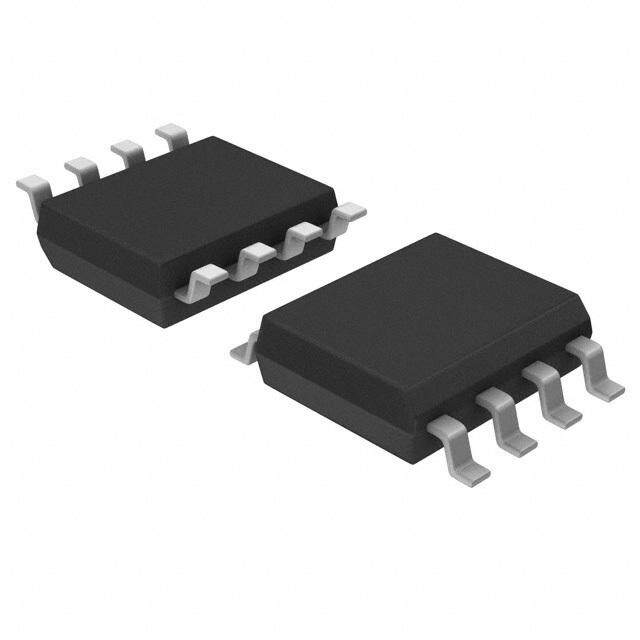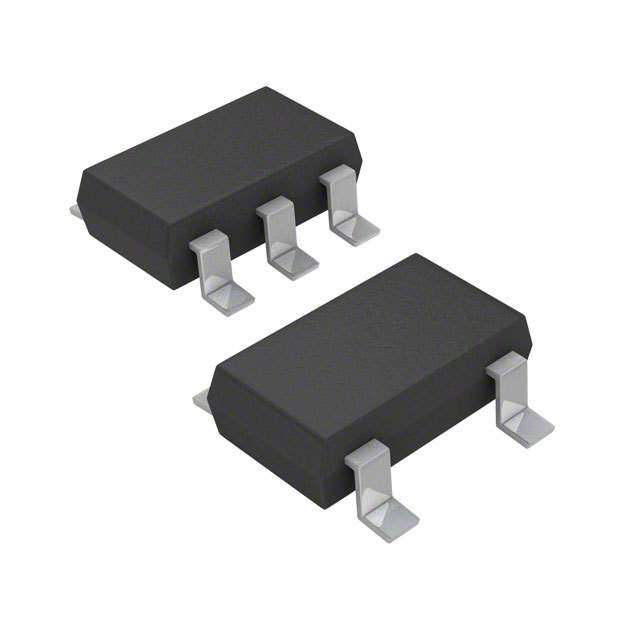ICGOO在线商城 > 集成电路(IC) > PMIC - 稳压器 - 线性 > NCP694H33HT1G
- 型号: NCP694H33HT1G
- 制造商: ON Semiconductor
- 库位|库存: xxxx|xxxx
- 要求:
| 数量阶梯 | 香港交货 | 国内含税 |
| +xxxx | $xxxx | ¥xxxx |
查看当月历史价格
查看今年历史价格
NCP694H33HT1G产品简介:
ICGOO电子元器件商城为您提供NCP694H33HT1G由ON Semiconductor设计生产,在icgoo商城现货销售,并且可以通过原厂、代理商等渠道进行代购。 NCP694H33HT1G价格参考。ON SemiconductorNCP694H33HT1G封装/规格:PMIC - 稳压器 - 线性, Linear Voltage Regulator IC Positive Fixed 1 Output 1A SOT-89-5。您可以下载NCP694H33HT1G参考资料、Datasheet数据手册功能说明书,资料中有NCP694H33HT1G 详细功能的应用电路图电压和使用方法及教程。
| 参数 | 数值 |
| 产品目录 | 集成电路 (IC)半导体 |
| 描述 | IC REG LDO 3.3V 1A SOT89-5低压差稳压器 1A CMOS B/S LDO |
| 产品分类 | |
| 品牌 | ON Semiconductor |
| 产品手册 | |
| 产品图片 |
|
| rohs | 符合RoHS无铅 / 符合限制有害物质指令(RoHS)规范要求 |
| 产品系列 | 电源管理 IC,低压差稳压器,ON Semiconductor NCP694H33HT1G- |
| 数据手册 | |
| 产品型号 | NCP694H33HT1G |
| 产品种类 | 低压差稳压器 |
| 供应商器件封装 | SOT-89-5 |
| 其它名称 | NCP694H33HT1GOSDKR |
| 包装 | Digi-Reel® |
| 商标 | ON Semiconductor |
| 回动电压—最大值 | 720 mV |
| 安装类型 | 表面贴装 |
| 安装风格 | SMD/SMT |
| 封装 | Reel |
| 封装/外壳 | SOT-89-5/6 |
| 封装/箱体 | SOT-89-5 |
| 工作温度 | -40°C ~ 85°C |
| 工厂包装数量 | 1000 |
| 最大功率耗散 | 900 mW |
| 最大工作温度 | + 85 C |
| 最大输入电压 | 6 V |
| 最小工作温度 | - 40 C |
| 最小输入电压 | 1.4 V |
| 标准包装 | 1 |
| 电压-跌落(典型值) | 0.18V @ 1A |
| 电压-输入 | 最高 6V |
| 电压-输出 | 3.3V |
| 电流-输出 | 1A |
| 电流-限制(最小值) | - |
| 稳压器拓扑 | 正,固定式 |
| 稳压器数 | 1 |
| 系列 | NCP694 |
| 线路调整率 | 0.05 %/V |
| 负载调节 | - 3 mV |
| 输出电压 | 3.3 V |
| 输出电流 | 1 A |
| 输出端数量 | 1 Output |
| 输出类型 | Fixed |

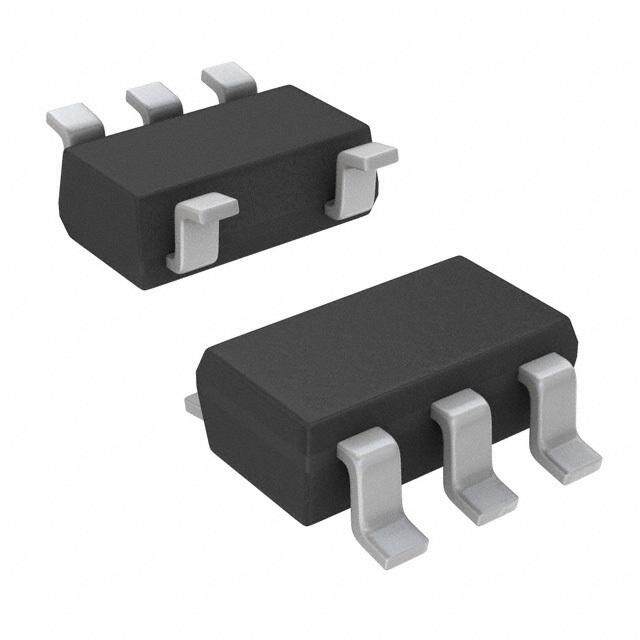
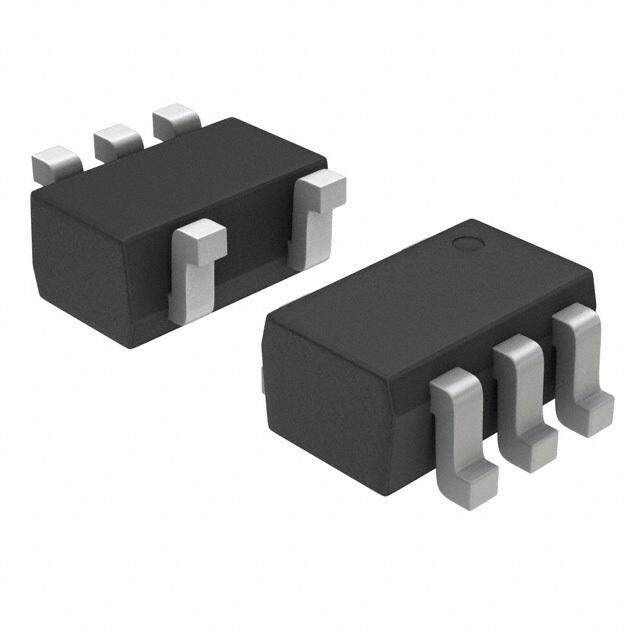

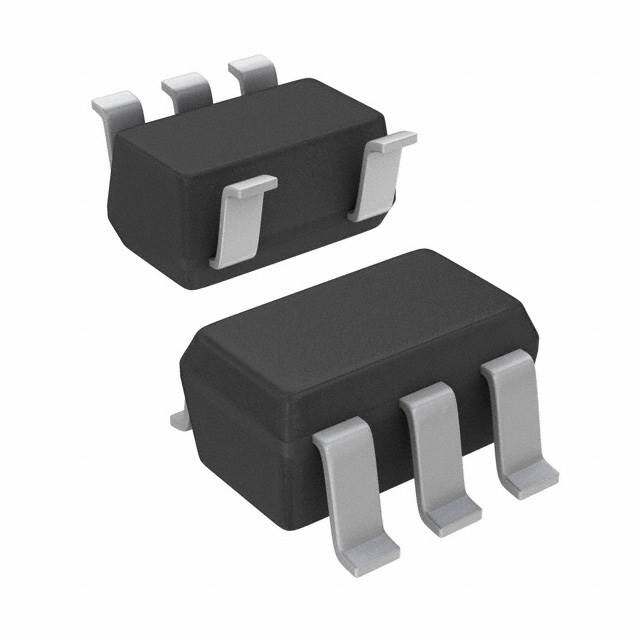

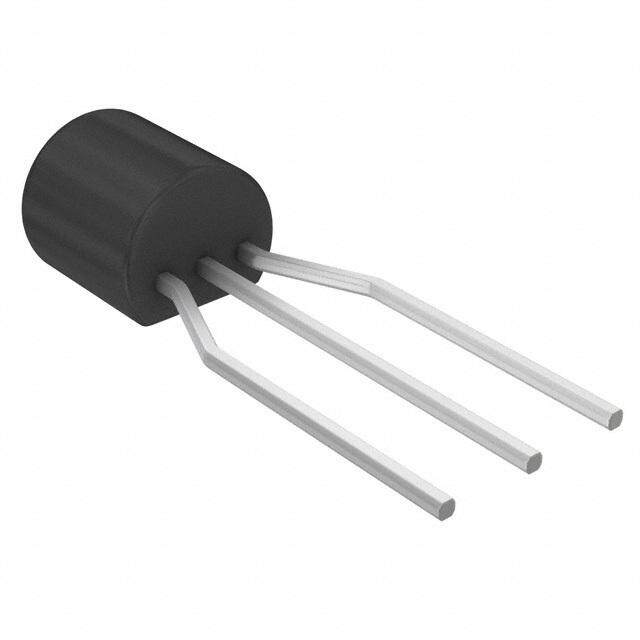
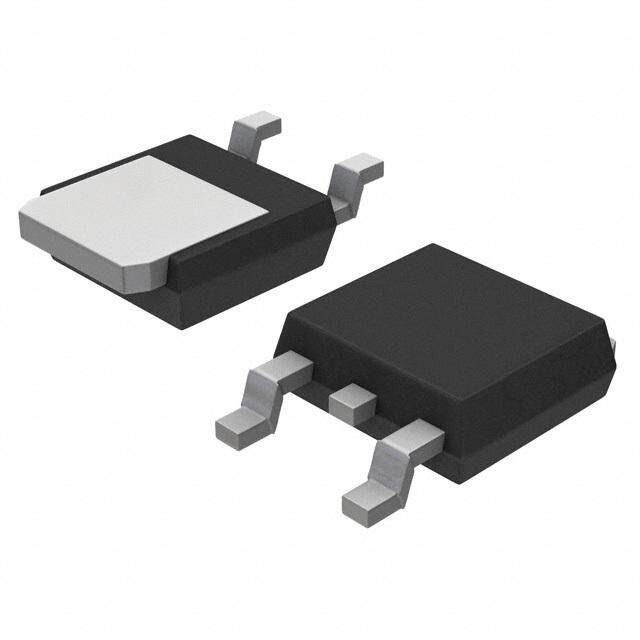

- 商务部:美国ITC正式对集成电路等产品启动337调查
- 曝三星4nm工艺存在良率问题 高通将骁龙8 Gen1或转产台积电
- 太阳诱电将投资9.5亿元在常州建新厂生产MLCC 预计2023年完工
- 英特尔发布欧洲新工厂建设计划 深化IDM 2.0 战略
- 台积电先进制程称霸业界 有大客户加持明年业绩稳了
- 达到5530亿美元!SIA预计今年全球半导体销售额将创下新高
- 英特尔拟将自动驾驶子公司Mobileye上市 估值或超500亿美元
- 三星加码芯片和SET,合并消费电子和移动部门,撤换高东真等 CEO
- 三星电子宣布重大人事变动 还合并消费电子和移动部门
- 海关总署:前11个月进口集成电路产品价值2.52万亿元 增长14.8%
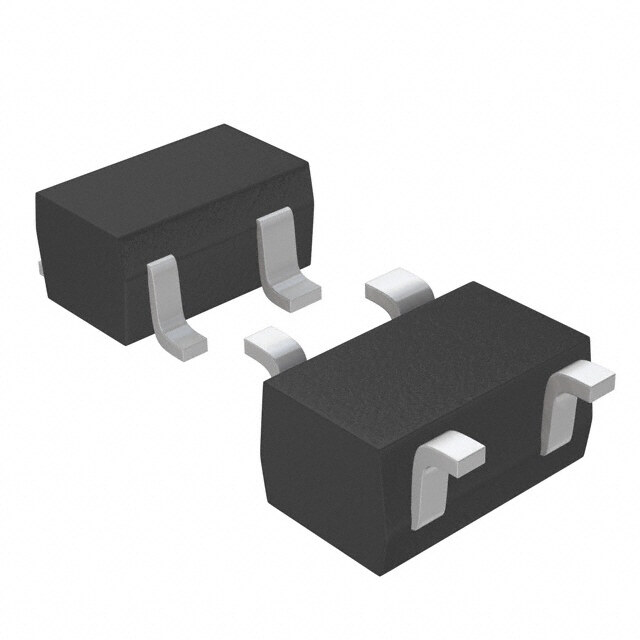
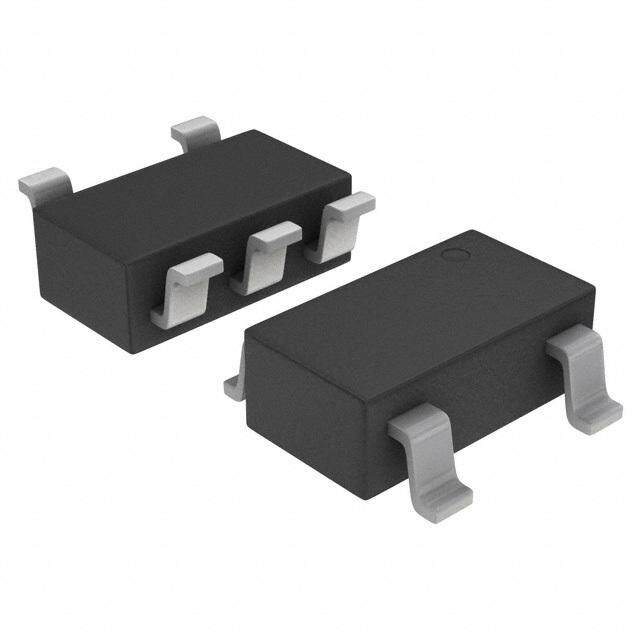


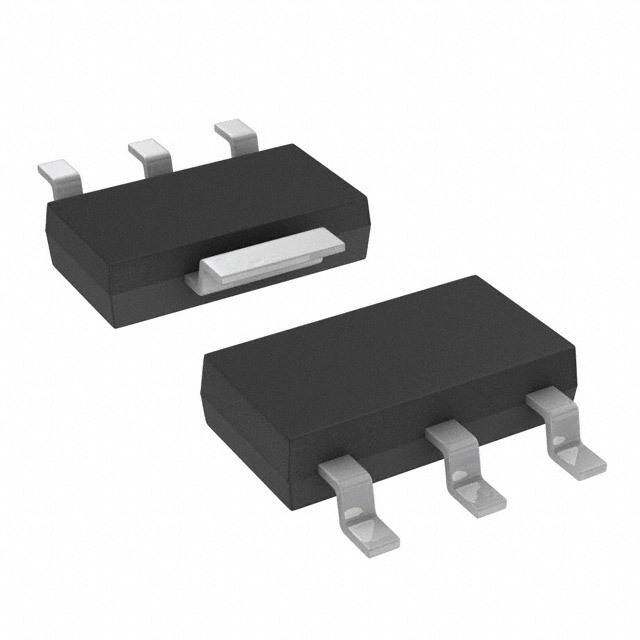
PDF Datasheet 数据手册内容提取
NCP694 1A CMOS Low-Dropout Voltage Regulator The NCP694 series of fixed output super low dropout linear regulators are designed for portable battery powered applications with high output current requirement up to 1 A and −3 mV typical load regulation at 1 A. Each device contains a voltage reference unit, an http://onsemi.com error amplifier, a PMOS power transistor, resistors for setting output voltage, a current limit circuits for overcurrent and thermal−shutdown. MARKING A standby mode with ultra low supply current can be realized with the DIAGRAMS chip enable function. The device is housed in the SOT−89−5 and HSON−6 packages. 1 Standard voltage versions are 0.8 V, 1.0 V, 1.2 V, 2.5 V, 3.3 V for fixed XXX version and adjustable output voltage down to 1.0 V. SOT−89−5 XMM CASE 528AB (cid:2) Features • Maximum Operating Voltage of 6.0 V • 6 Minimum Output Voltage Down to 0.8 V for Fix Version and 1.0 V for Adjustable Version 6 XXX • XYY(cid:2) Load Regulation −3 mV at 1 A Output Current 1 • Low Dropout HSON−6 1 • Build−in Auto Discharge Function for D Version CASE 506AE • Standby Mode With Low Consumption XXXX = Specific Device Code • These are Pb−Free Devices MM, YY = Lot Number G or (cid:2) = Pb−Free Package Typical Applications • Battery Powered Instruments For actual marking Pb−Free indicator, “G” or micro- • dot “(cid:2)” may or may not be provided. Hand−Held Instruments • Camcorders and Cameras • ORDERING INFORMATION Portable communication equipments See detailed ordering and shipping information in the package dimensions section on page 15 of this data sheet. © Semiconductor Components Industries, LLC, 2011 1 Publication Order Number: June, 2011 − Rev. 2 NCP694/D
NCP694 6 5 4 4 5 6 HSON−6 1 2 3 3 2 1 (TOP VIEW) (BOTTOM VIEW) 5 4 4 5 SOT−89−5 1 2 3 3 2 1 (TOP VIEW) (BOTTOM VIEW) Figure 1. Pin Description PIN FUNCTION DESCRIPTION FOR SOT−89−5 PACKAGE Pin No. Pin Name Description 1 ADJ/NC Adjust pin for NCP694DADJHT1G and NCP694HADJHT1G / No connection 2 GND Power supply ground 3 CE This input is used to place the device into low−power standby. When this input is pulled low, the device is disabled. If this function is not used, Enable should be connected to Vin. 4 Vin Positive power supply input voltage. 5 Vout Regulated output voltage. PIN FUNCTION DESCRIPTION FOR HSON−6 PACKAGE Pin No. Pin Name Description 1 Vout Regulated output voltage 2 Vout Regulated output voltage 3 ADJ / NC Adjust pin for NCP694DSANADJT1G and NCP694HSANADJT1G / No connection 4 GND Power supply ground 5 CE This input is used to place the device into low power standby. When this input is pulled low, the device is disabled. If this function is not used, Enable should be connected to Vin. 6 Vin Positive power supply input voltage Vin Vout Vin Vout Vin Vout Vin Vout Vref Vref Current Limit& Current Limit& CE Thermal Shutdown CE Thermal Shutdown GND GND Version H (NCP694HxxxxT1G) Version D (NCP694DxxxxT1G) Figure 2. Internal Block Diagram http://onsemi.com 2
NCP694 MAXIMUM RATINGS Rating Symbol Value Unit Input Voltage Vin 6.5 V Enable Voltage VCE −0.3 to Vin V Output Voltage Vout −0.3 to Vin + 0.3 V Power Dissipation SOT−89−5 PD 900 mW Power Dissipation HSON−6 PD 900 mW Operating Junction Temperature TJ +150 °C Operating Ambient Temperature TA −40 to +85 °C Storage Temperature Tstg −55 to +125 °C Stresses exceeding Maximum Ratings may damage the device. Maximum Ratings are stress ratings only. Functional operation above the Recommended Operating Conditions is not implied. Extended exposure to stresses above the Recommended Operating Conditions may affect device reliability. 1. This device series contains ESD protection and exceeds the following tests: Human Body Model 2000 V per JEDEC Machine Model Method 200 V THERMAL CHARACTERISTICS Rating Symbol Test Conditions Typical Value Unit Junction−to−Ambient SOT−89−5 R(cid:2)JA 1 oz Copper Thickness, 100 mm2 111 °C/W Power Dissipation SOT−89−5 PD 900 mW Junction−to−Ambient HSON−6 R(cid:2)JA 1 oz Copper Thickness, 100 mm2 111 °C/W Power Dissipation HSON−6 PD 900 mW NOTE: Single component mounted on an 80 x 80 x 1.5 mm FR4 PCB with stated copper head spreading area. Using the following boundary conditions as stated in EIA/JESD 51−1, 2, 3, 7, 12. http://onsemi.com 3
NCP694 ELECTRICAL CHARACTERISTICS FOR FIX VERSION (Vin = Vout(nom.) + 1.0 V, VCE = Vin, Cin = 4.7 (cid:3)F, Cout = 4.7 (cid:3)F, TA = 25°C, unless otherwise noted) Characteristic Symbol Min Typ Max Unit Output Voltage (TA = 25°C, Iout = 100 mA, Vin−Vout = 1 V) Vout V 0.8 V 0.770 0.8 0.830 1.0 V 0.970 1.0 1.030 1.2 V 1.170 1.2 1.030 2.5 V 2.450 2.5 2.550 3.3 V 3.234 3.3 3.366 Output Current (Vin−Vout = 1 V) Iout 1 A Input voltage V 1.4 6.0 V in Line Regulation (Iout = 100 mA) Regline − 0.05 0.2 %/V Load Regulation (Iout = 1 mA to 300 mA, Vin = Vout + 2.0 V) Regload03 −15 −2 15 mV Load Regulation (Iout = 1 mA to 1 A, Vin = Vout + 2.0 V) Regload1 − −3 − mV Supply Current (Iout = 0 A, (Vin − Vout) = 1 V, VCE = Vin) Iss 60 100 (cid:3)A Standby Current (VCE = 0V, Vin = 6.0 V) Istby 0.1 1.0 (cid:3)A Short Current Limit (Vout = 0 V) Ish 250 mA Output Voltage Temperature Coefficient Tc − (cid:2)100 − ppm/°C Enable Input Threshold Voltage VthCE V (Voltage Increasing, Output Turns On, Logic High) 1.0 − 6 (Voltage Decreasing, Output Turns Off, Logic Low) 0 − 0.4 Enable Pull−down Current 100 220 nA Drop Output Voltage (TA = 25°C, Iout = 300 mA) Vin−Vout V 0.8 V Output voltage Vout (V) 0.33 0.570 1.0 V 0.22 0.470 1.2 V 0.18 0.320 2.5 V 0.10 0.150 3.3 V 0.05 0.100 Drop Output Voltage (TA = 25°C, Iout = 1A) Vin−Vout V 0.8 V Output voltage Vout (V) 0.72 1.0 V 0.64 1.2 V 0.56 2.5 V 0.32 3.3 V 0.18 Ripple Rejection (Ripple 200 mVpp, Iout =100 mA, f = 1 kHz) PSRR 70 dB Output Noise (BW = 10 Hz to 100 kHz, Iout = 1 mA) Vnoise 30 (cid:3)Vrms Thermal Shutdown Temperature/Hysteresis Tshd/Hyst 150/30 °C RDS(on) of additional output transistor (D version only) RDS(on) 30 (cid:4) 2. Maximum package power dissipation limits must be observed. 3. Low duty cycle pulse techniques are used during testing to maintain the junction temperature as close to ambient as possible. http://onsemi.com 4
NCP694 ELECTRICAL CHARACTERISTIC FOR ADJUSTABLE VERSION (Vin = Vout + 1 V, VCE = Vin, Cin = Cout = 4.7 (cid:3)F, TA = 25°C, unless otherwise noted) Characteristic Symbol Min Typ Max Unit Input Voltage Vin 1.4 6 V Supply Current (Vout = VADJ, Vin = 2 V, VCE = Vin) ISS 60 100 uA Standby Current (Vin = 6.0 V, VCE = 0 V) Istandby 0.1 1 uA Reference Voltage For Adjustable Voltage Regulator (Vout = VADJ, Vin = 2.0 V, Vref 0.97 1 1.03 V Iout = 100 mA Output Voltage Range Voutrange 1 Vin V Output Current (Vout = VADJ, Vin = 2.0 V) Iout 1 A Load Regulation (Vin = 1.4 V, 1 mA < Iout < 300 mA, Vout = VADJ) Vout/Iout −15 −2 15 mV Load Regulation (Vin = 1.7 V, 1 mA < Iout < 1 A, Vout = VADJ) Vout/Iout −3 mV Dropout Voltage (Vout = VADJ, Iout = 300 mA) Vdrop300 0.18 0.32 V Dropout Voltage (Vout = VADJ, Iout = 1 A) Vdrop1 0.56 V Line regulation (Vout = VADJ, Iout = 100 mA, 1.5 V < Vin < 6.0 V Vout/Vin 0.05 0.2 %V PSRR ( f = 1 kHz, Vout = VADJ, Vin = 2.5 V, Iout = 100 mA, Input Ripple 0.5 Vpp) PSRR 70 dB Output Voltage Temperature Coefficient (Iout = 100 mA, −40°C < TJ < 85°C) Vout/TJ (cid:2)100 ppm/°C Short Current Limit (Vout = VADJ = 0) Ilim 250 mA Enable Pull−down Current ICE 100 220 nA Enable Input Threshold Voltage VthCE V (Voltage Increasing, Output Turns On, Logic High) 1 − 6 (Voltage Decreasing, Output Turns Off, Logic Low) 0 − 0.4 Thermal Shutdown Temperature/Hysteresis Tshdn/ 150/ °C Hyst 30 RDS(on) of additional output transistor (D version only) RDS(on) 30 (cid:4) http://onsemi.com 5
NCP694 APPLICATIONS INFORMATION A typical application circuit for the NCP694 series is Set external components, especially the output capacitor, shown in Figure 5, Typical Application Schematic. as close as possible to the circuit, and make leads as short as possible. Input Decoupling (C1) A 4.7 (cid:3)F capacitor either ceramic or tantalum is Thermal recommended and should be connected as close as possible As power across the NCP694 increases, it might become to the pins of NCP694 device. Higher values and lower ESR necessary to provide some thermal relief. The maximum will improve the overall line transient response. power dissipation supported by the device is dependent upon board design and layout. Mounting pad configuration Output Decoupling (C2) on the PCB, the board material, and also the ambient The minimum decoupling value is 4.7 (cid:3)F and can be temperature effect the rate of temperature rise for the part. augmented to fulfill stringent load transient requirements. This is stating that when the NCP694 has good thermal The regulator accepts ceramic chip capacitors as well as conductivity through the PCB, the junction temperature will tantalum devices. If a tantalum capacitor is used, and its ESR be relatively low with high power dissipation applications. is large, the loop oscillation may result. Because of this, select C2 carefully considering its frequency characteristics. Output Voltage Setting of Adjustable Version. Larger values improve noise rejection and load regulation An external two resistors are required for setting desired transient response. output voltage as shows Figure 3. Output Voltage Setting. The equation for the output voltage is mentioned in equation Enable Operation below. The enable pin CE will turn on or off the regulator. These V (cid:3)V (cid:4)R1(cid:5)I1 limits of threshold are covered in the electrical specification out ref (cid:6) (cid:7) section of this data sheet. If the enable is not used then the (cid:3)V (cid:4)R1(cid:5) I (cid:4)I2 ref adj pin should be connected to Vin. The D version devices (cid:6) (cid:7) (cid:6) (cid:7) (NCP694DxxxxT1G) have additional circuitry in order to (cid:3)Vref(cid:4)R1(cid:5) Vref(cid:8)Radj (cid:4)R1(cid:5) Vref(cid:8)R2 (eq. 1) reach the turn−off speed faster than normal type. When the (cid:6) (cid:6) (cid:7) (cid:7) mode is into standby with CE signal, auto discharge (cid:3)Vref(cid:5) 1(cid:4) R1(cid:8)Radj (cid:4)(cid:6)R1(cid:8)R2(cid:7) transistor turns on. (cid:6) (cid:6) (cid:7) (cid:7) (cid:3)1.0(cid:5) 1(cid:4) R1(cid:8)R (cid:4)(cid:6)R1(cid:8)R2(cid:7) adj Hints For better accuracy, choosing R2 << R reduces the error Please be sure the V and GND lines are sufficiently wide. adj in given by ADJ pin consumption. The typical resistance R If their impedance is high, noise pickup or unstable adj is showed in Figure 4. ADJ Pin Resistance operation may result. 1.8 Vout R1 I1 1.6 (cid:4)) ADJ M Vref = 1 V E ( C 1.4 Iadj N A T Radj S SI 1.2 GND R2 I2 RE , dj Ra 1.0 0.8 −50 −25 0 25 50 75 100 TJ, TEMPERATURE (°C) Figure 3. Output Voltage Setting Figure 4. ADJ Pin Resistance vs. Temperature http://onsemi.com 6
NCP694 NCP694DSAN08T1G Vin Vout 6 1 Vin Vout 5 2 CE Vout C1 C2 4.7 (cid:3)F 4 GND NC 3 4.7 (cid:3)F GND GND Figure 5. Typical Application Schematic http://onsemi.com 7
NCP694 TYPICAL CHARACTERISTICS 0.9 1.6 0.8 1.4 1.7 V V) 0.7 V) 1.2 GE ( 0.6 1.6 V 2.5 V GE ( 1.0 LTA 0.5 Vin = 1.4 V LTA Vin = 3.5 V O O 0.8 V 0.4 2.0 V V 2.5 V T T U U 0.6 TP 0.3 TP 3.0 V U U 0.4 O 0.2 O 0.1 Vout = 0.8 V 0.2 Vout = 1.5 V TA = 25°C TA = 25°C 0.0 0.0 0.0 0.2 0.4 0.6 0.8 1.0 1.2 1.4 0.0 0.2 0.4 0.6 0.8 1.0 1.2 1.4 OUTPUT CURRENT (A) OUTPUT CURRENT (A) Figure 6. Output Voltage vs. Output Current Figure 7. Output Voltage vs. Output Current 3.5 1.2 3.0 4.5 V 1.0 3.6 V V) V) 2.5 V GE ( 2.5 Vin = 4.0 V GE ( 0.8 Vin = 1.4 V 1.6 V TA 2.0 TA 2.0 V L L O O 0.6 V V T 1.5 T U U P P 0.4 T 1.0 T U U O O 0.2 0.5 Vout = 3.3 V Vout = Vadj = 1.0 V TA = 25°C TA = 25°C 0.0 0.0 0.0 0.2 0.4 0.6 0.8 1.0 1.2 1.4 1.6 0.0 0.2 0.4 0.6 0.8 1.0 1.2 1.4 OUTPUT CURRENT (A) OUTPUT CURRENT (A) Figure 8. Output Voltage vs. Output Current Figure 9. Output Voltage vs. Output Current for Adjustable Output 1.2 1.6 1.4 1.0 V) V) 1.2 E ( 0.8 E ( G G 1.0 A A T T VOL 0.6 Iout = 1 mA VOL 0.8 Iout = 1 mA UT 50 mA UT 0.6 50 mA P 0.4 P T T OU 100 mA OU 0.4 100 mA 0.2 300 mA VToAu t= = 2 05.°8C V 0.2 300 mA VToAu t= = 2 15.°5C V 0.0 0.0 0.0 1.0 2.0 3.0 4.0 5.0 6.0 0.0 1.0 2.0 3.0 4.0 5.0 6.0 INPUT VOLTAGE (V) INPUT VOLTAGE (V) Figure 10. Output Voltage vs. Input Voltage Figure 11. Output Voltage vs. Input Voltage http://onsemi.com 8
NCP694 TYPICAL CHARACTERISTICS 3.5 70.0 3.0 60.0 E (V) 2.5 (cid:3)T (A) 50.0 G N LTA 2.0 RE 40.0 O R V U UT 1.5 Iout = 1 mA Y C 30.0 UTP 1.0 PPL 20.0 O 50 mA SU Vout = 0.8 V 0.50 130000 m mAA VToAu t= = 2 35.°3C V 10.00 ITouAt == 205 m°CA 0 1.0 2.0 3.0 4.0 5.0 6.0 0 1 2 3 4 5 6 INPUT VOLTAGE (V) INPUT VOLTAGE (V) Figure 12. Output Voltage vs. Input Voltage Figure 13. Supply Current vs. Input Voltage 70.0 70.0 60.0 60.0 (cid:3)T (A) 50.0 (cid:3)NT (A) 50.0 EN 40.0 RE 40.0 R R R U U 30.0 C 30.0 Y C LY PL 20.0 PP 20.0 P U SU Vout = 1.5 V S Vout = 3.3 V 10.0 Iout = 0 mA 10.0 Iout = 0 mA TA = 25°C TA = 25°C 0.0 0.0 0 1 2 3 4 5 6 0 1 2 3 4 5 6 INPUT VOLTAGE (V) INPUT VOLTAGE (V) Figure 14. Supply Current vs. Input Voltage Figure 15. Supply Current vs. Input Voltage 0.820 1.520 0.815 1.510 V)0.810 V) E ( E ( G0.805 G A A 1.500 T T OL0.800 OL V V UT 0.795 UT 1.490 P P T T U0.790 U O O 1.480 0.785 Vout = 0.8 V Vout = 1.5 V Iout = 0 mA Iout = 0 mA 0.780 1.470 −40.0 −20.0 0.0 20.0 40.0 60.0 80.0 −40.0 −20.0 0.0 20.0 40.0 60.0 80.0 TEMPERATURE (°C) TEMPERATURE (°C) Figure 16. Output Voltage vs. Temperature Figure 17. Output Voltage vs. Temperature http://onsemi.com 9
NCP694 TYPICAL CHARACTERISTICS 3.302 0.8 3.301 0.7 TA = 85°C E (V) 33..239090 GE (V) 0.6 TAG 3.298 LTA 0.5 25°C UT VOL 33..229967 OUT VO 00..34 −40°C OUTP 33..229945 DROP 0.2 Vout = 0.8 V 3.293 Vout = 3.3 V 0.1 Iout = 0 mA 3.292 0.0 −40.0 −20.0 0.0 20.0 40.0 60.0 80.0 0.0 0.2 0.4 0.6 0.8 1.0 TEMPERATURE (°C) OUTPUT CURRENT (A) Figure 18. Output Voltage vs. Temperature Figure 19. Dropout Voltage vs. Output Current 0.4 0.20 0.18 0.35 E (V) 0.3 TA = 85°C E (V) 00..1146 G G TA 0.25 TA 0.12 TA = 85°C L L O 0.2 O 0.10 V V T T U 0.15 25°C U 0.08 O O ROP 0.1 −40°C ROP 0.06 25°C D D 0.04 0.05 Vout = 1.5 V 0.02 −40°C Vout = 3.3 V 0 0.00 0 0.2 0.4 0.6 0.8 1 0.0 0.1 0.2 0.3 0.4 0.5 0.6 0.7 0.8 0.9 1.0 OUTPUT CURRENT (A) OUTPUT CURRENT (A) Figure 20. Dropout Voltage vs. Output Current Figure 21. Dropout Voltage vs. Output Current 0.8 0.7 TA = 25°C 0.7 0.6 V) 0.6 V) E ( E ( 0.5 LTAG 0.5 TA = 85°C LTAG 0.4 O 0.4 O V V T T 0.3 OU 0.3 25°C OU Iout = 1 A ROP 0.2 ROP 0.2 D 0.1 −40°C D 0.1 500 mA Vout = Vadj = 1 V 100 mA 0.0 0 0.0 0.2 0.4 0.6 0.8 1.0 1 1.5 2 2.5 3 3.5 4 4.5 5 OUTPUT CURRENT (A) SET OUTPUT VOLTAGE (V) Figure 22. Dropout Voltage vs. Output Current Figure 23. Dropout Voltage vs. Set Output for Adjustable Output Voltage http://onsemi.com 10
NCP694 TYPICAL CHARACTERISTICS 80 90 70 80 Iout = 100 mA 70 Iout = 100 mA 60 Iout = 1 A 60 50 B) B) d d 50 RR ( 40 RR ( 40 Iout = 1 A S S P 30 P 30 20 Vout = 0.8 V 20 Vout = 1.5 V Vin = 1.8 V + 0.5 VPP Modulation Vin = 2.5 V + 0.5 VPP Modulation 10 TA = 25°C 10 TA = 25°C Cout = 4.7 (cid:3)F Cout = 4.7 (cid:3)F 0 0 0.1 1.0 10.0 100 0.1 1.0 10.0 100 FREQUENCY (kHz) FREQUENCY (kHz) Figure 24. PSRR vs. Frequency Figure 25. PSRR vs. Frequency 90 80 70 Iout = 100 mA 60 dB) 50 Iout = 1 A R ( R 40 S P 30 Vout = 3.3 V 20 Vin = 4.3 V + 0.5 VPP Modulation TA = 25°C 10 Cout = 4.7 (cid:3)F 0 0.1 1.0 10.0 100 FREQUENCY (kHz) Figure 26. PSRR vs. Frequency 3.0 0.84 2.5 0.83 E (V) 2.0 Vout = 0.8 V Input Voltage 0.82 GE (V) AG Vin = Step 1.8 to 2.8 V TA LT 1.5 Tr = Tf = 5 (cid:3)s 0.81 OL T VO Cout = 4.7T A(cid:3) F=, 2Io5u°tC = 100 mA UT V U 1.0 0.80 P P T N Output Voltage U I O 0.5 0.79 0.0 0.78 −10 0 10 20 30 40 50 60 70 80 90 100 TIME ((cid:3)s) Figure 27. Line Transient Response http://onsemi.com 11
NCP694 TYPICAL CHARACTERISTICS 6.0 3.320 5.0 3.315 E (V) 4.0 Vin = StVepou tto = 4 3.3.3 V V to 5.3 V Input Voltage 3.310 GE (V) AG Tr = Tf = 5 (cid:3)s, TA LT 3.0 Cout = 4.7 (cid:3)F 3.305 OL UT VO 2.0 IouTtA = = 1 2050° mCA 3.300 PUT V P T N Output Voltage U I O 1.0 3.295 0.0 3.290 −10 0 10 20 30 40 50 60 70 80 90 100 TIME ((cid:3)s) Figure 28. Input Transient Response 110 0.88 100 0.87 mA) 90 0.86 V) T ( 80 0.85 E ( N G E 70 0.84 A RR 60 Vout = 0.8 V 0.83 OLt U Vin = 1.8 V Output Current V T C 50 Cout = 4.7 (cid:3)F, 0.82 UT PU 40 Iout = Step 50 mA to 100 mA 0.81 TP UT TA = 25°C Output Voltage OU O 30 0.80 20 0.79 10 0.78 −10 0 10 20 30 40 50 60 70 80 90 100 TIME ((cid:3)s) Figure 29. Load Transient Response 110 3.37 100 3.36 NT (mA) 8900 CVVoouinut t === 443...733 (cid:3)VVF, 33..3345 GE (V) RE 70 Iout =to S 1t0e0p m50A mA 3.33 LTA R 60 3.32 O UT CU 50 TA = 25°C OOuuttppuutt CVoulrtraegnet 3.31 PUT V P 40 3.30 T T U OU 30 3.29 O 20 3.28 10 3.27 −10 0 10 20 30 40 50 60 70 80 90 100 TIME ((cid:3)s) Figure 30. Load Transient Response http://onsemi.com 12
NCP694 TYPICAL CHARACTERISTICS Figure 31. Output Voltage vs. CE Pin Turn−On NCP694Dx08xx Figure 32. Output Voltage vs. CE Pin Turn−On NCP694Dx33xx http://onsemi.com 13
NCP694 TYPICAL CHARACTERISTICS Figure 33. Output Voltage vs. CE Pin Turn−Off NCP694H08xxxx Figure 34. Output Voltage vs. CE Pin Turn−Off NCP694D08xxxx http://onsemi.com 14
NCP694 ORDERING INFORMATION Nominal Device Output Voltage Description Marking Package Shipping† NCP694HADJHT1G adj. Enable High L 0 0 B SOT−89−5 1000 / Tape & Reel (Pb−Free) NCP694H08HT1G 0.8 V Enable High L 0 8 B SOT−89−5 1000 / Tape & Reel (Pb−Free) NCP694H10HT1G 1.0 V Enable High L 1 0 B SOT−89−5 1000 / Tape & Reel (Pb−Free) NCP694H12HT1G 1.2 V Enable High L 1 2 B SOT−89−5 1000 / Tape & Reel (Pb−Free) NCP694H25HT1G 2.5 V Enable High L 2 5 B SOT−89−5 1000 / Tape & Reel (Pb−Free) NCP694H33HT1G 3.3 V Enable High L 3 3 B SOT−89−5 1000 / Tape & Reel (Pb−Free) NCP694DADJHT1G adj. Enable High − L 0 0 D SOT−89−5 1000 / Tape & Reel Auto discharge (Pb−Free) NCP694D08HT1G 0.8 V Enable High − L 0 8 D SOT−89−5 1000 / Tape & Reel Auto discharge (Pb−Free) NCP694D10HT1G 1.0 V Enable High − L 1 0 D SOT−89−5 1000 / Tape & Reel Auto discharge (Pb−Free) NCP694D12HT1G 1.2 V Enable High − L 1 2 D SOT−89−5 1000 / Tape & Reel Auto discharge (Pb−Free) NCP694D25HT1G 2.5V Enable High − L 2 5 D SOT−89−5 1000 / Tape & Reel Auto discharge (Pb−Free) NCP694D33HT1G 3.3 V Enable High − L 3 3 D SOT−89−5 1000 / Tape & Reel Auto discharge (Pb−Free) NCP694HSANADJT1G adj. Enable High H 0 0 B HSON−6 3000 / Tape & Reel (Pb−Free) NCP694HSAN08T1G 0.8 V Enable High H 0 8 B HSON−6 3000 / Tape & Reel (Pb−Free) NCP694HSAN10T1G 1.0 V Enable High H 1 0 B HSON−6 3000 / Tape & Reel (Pb−Free) NCP694HSAN12T1G 1.2 V Enable High H 1 2 B HSON−6 3000 / Tape & Reel (Pb−Free) NCP694HSAN25T1G 2.5 V Enable High H 2 5 B HSON−6 3000 / Tape & Reel (Pb−Free) NCP694HSAN33T1G 3.3 V Enable High H 3 3 B HSON−6 3000 / Tape & Reel (Pb−Free) NCP694DSANADJT1G adj. Enable High − H 0 0 D HSON−6 3000 / Tape & Reel Auto discharge (Pb−Free) NCP694DSAN08T1G 0.8 V Enable High − H 0 8 D HSON−6 3000 / Tape & Reel Auto discharge (Pb−Free) NCP694DSAN10T1G 1.0 V Enable High − H 1 0 D HSON−6 3000 / Tape & Reel Auto discharge (Pb−Free) NCP694DSAN12T1G 1.2 V Enable High − H 1 2 D HSON−6 3000 / Tape & Reel Auto discharge (Pb−Free) NCP694DSAN25T1G 2.5 V Enable High − H 2 5 D HSON−6 3000 / Tape & Reel Auto discharge (Pb−Free) NCP694DSAN33T1G 3.3 V Enable High − H 3 3 D HSON−6 3000 / Tape & Reel Auto discharge (Pb−Free) †For information on tape and reel specifications, including part orientation and tape sizes, please refer to our Tape and Reel Packaging Specifications Brochure, BRD8011/D. http://onsemi.com 15
NCP694 PACKAGE DIMENSIONS SOT−89, 5 LEAD CASE 528AB−01 ISSUE O D NOTES: 1. DIMENSIONING AND TOLERANCING PER ASME Y14.5M, 1994. 2. CONTROLLING DIMENSION: MILLIMETERS. 3. LEAD THICKNESS INCLUDES LEAD FINISH. 4. DIMENSIONS D AND E DO NOT INCLUDE MOLD FLASH, PROTRUSIONS, OR GATE BURRS. E H 5. DIMENSIONS L, L2, L3, L4, L5, AND H ARE MEAS- URED AT DATUM PLANE C. MILLIMETERS DIM MIN MAX 1 A 1.40 1.60 b 0.32 0.52 b1 0.37 0.57 TOP VIEW c 0.30 0.50 D 4.40 4.60 D2 1.40 1.80 E 2.40 2.60 c e 1.40 1.60 A H 4.25 4.45 L 1.10 1.50 0.10 C L2 0.80 1.20 L3 0.95 1.35 C SIDE VIEW L4 0.65 1.05 L5 0.20 0.60 e e RECOMMENDED b1 b L2 MOUNTING FOOTPRINT* 4X0.57 L 1 2 3 1.75 1.50 0.45 L5 2.79 5 4 4.65 L3 L4 D2 1.65 1.30 1 BOTTOM VIEW 2X 0.62 2X1.50 DIMENSIONS: MILLIMETERS *For additional information on our Pb−Free strategy and soldering details, please download the ON Semiconductor Soldering and Mounting Techniques Reference Manual, SOLDERRM/D. http://onsemi.com 16
NCP694 PACKAGE DIMENSIONS HSON−6 CASE 506AE−01 ISSUE A D A B NOTES: PIN ONE 6 4 1. DIMENSIONING AND TOLERANCING PER REFERENCE ASME Y14.5M, 1994. 2. CONTROLLING DIMENSION: 2 X E1 E MILLIMETERS. 0.20 C 3. DIMENSION b APPLIES TO PLATED TERMINAL AND IS MEASURED BETWEEN 2 X 1 3 0.10 AND 0.15 MM FROM TERMINAL. 4. COPLANARITY APPLIES TO THE 0.20 C EXPOSED PAD AS WELL AS THE TERMINALS. TOP VIEW MILLIMETERS DIM MIN MAX 0.10 C A 0.70 0.90 A3 0.15 REF A b 0.20 0.40 6 X 0.08 C D 2.90 BSC (A3) D2 1.40 1.60 SEATING C E 3.00 BSC PLANE SIDE VIEW E1 2.80 BSC E2 1.50 1.70 e 0.95 BSC L 0.15 0.25 D2 e 1 3 L 6 X E2 EXPOSED PAD 6 4 b 6 X NOTE 3 BOTTOM VIEW 0.10 C A B 0.05 C ON Semiconductor and are registered trademarks of Semiconductor Components Industries, LLC (SCILLC). SCILLC reserves the right to make changes without further notice to any products herein. SCILLC makes no warranty, representation or guarantee regarding the suitability of its products for any particular purpose, nor does SCILLC assume any liability arising out of the application or use of any product or circuit, and specifically disclaims any and all liability, including without limitation special, consequential or incidental damages. “Typical” parameters which may be provided in SCILLC data sheets and/or specifications can and do vary in different applications and actual performance may vary over time. All operating parameters, including “Typicals” must be validated for each customer application by customer’s technical experts. SCILLC does not convey any license under its patent rights nor the rights of others. SCILLC products are not designed, intended, or authorized for use as components in systems intended for surgical implant into the body, or other applications intended to support or sustain life, or for any other application in which the failure of the SCILLC product could create a situation where personal injury or death may occur. Should Buyer purchase or use SCILLC products for any such unintended or unauthorized application, Buyer shall indemnify and hold SCILLC and its officers, employees, subsidiaries, affiliates, and distributors harmless against all claims, costs, damages, and expenses, and reasonable attorney fees arising out of, directly or indirectly, any claim of personal injury or death associated with such unintended or unauthorized use, even if such claim alleges that SCILLC was negligent regarding the design or manufacture of the part. SCILLC is an Equal Opportunity/Affirmative Action Employer. This literature is subject to all applicable copyright laws and is not for resale in any manner. PUBLICATION ORDERING INFORMATION LITERATURE FULFILLMENT: N. American Technical Support: 800−282−9855 Toll Free ON Semiconductor Website: www.onsemi.com Literature Distribution Center for ON Semiconductor USA/Canada P.O. Box 5163, Denver, Colorado 80217 USA Europe, Middle East and Africa Technical Support: Order Literature: http://www.onsemi.com/orderlit Phone: 303−675−2175 or 800−344−3860 Toll Free USA/Canada Phone: 421 33 790 2910 Fax: 303−675−2176 or 800−344−3867 Toll Free USA/Canada Japan Customer Focus Center For additional information, please contact your local Email: orderlit@onsemi.com Phone: 81−3−5773−3850 Sales Representative http://onsemi.com NCP694/D 17
 Datasheet下载
Datasheet下载
